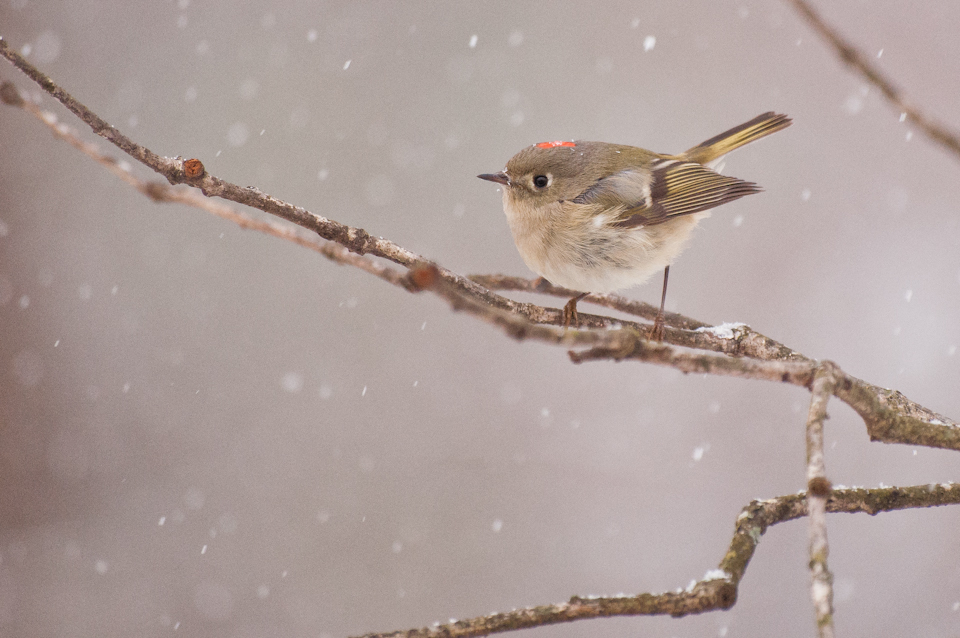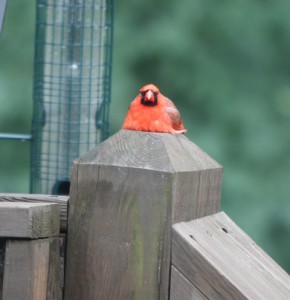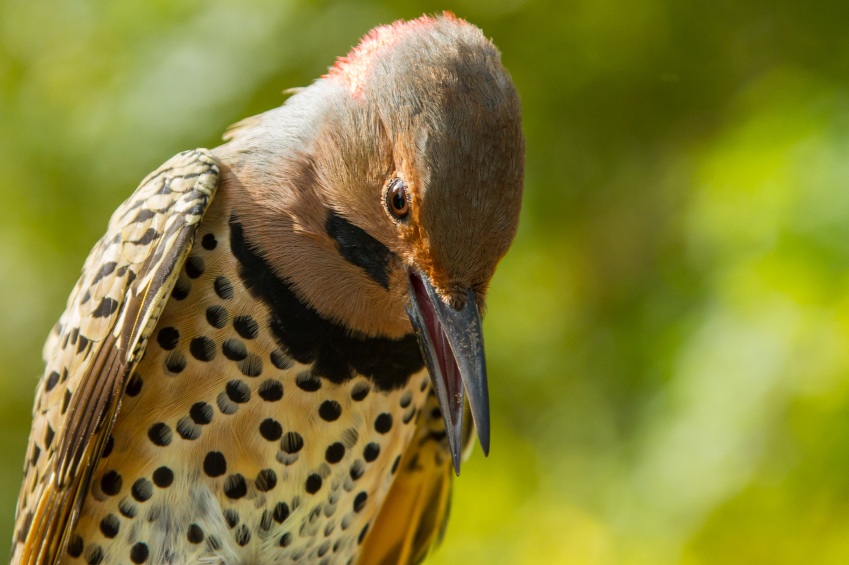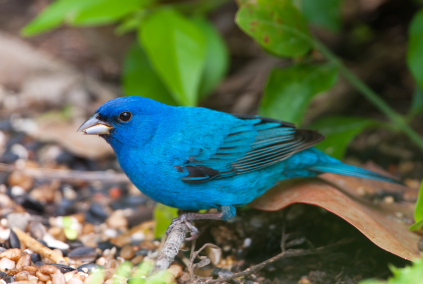Photo by: Beth Willis
The Ruby-crowned Kinglet is a small songbird with an abundance of energy. It’s striking ruby-colored feathers, for which it is named, are a rare treat for bird watchers patient enough to track a male bird and wait for it to reveal those crimson colors. Only the males have the noted ruby crown.
Tracking these birds is no easy task. They flick their wings quickly and dart through thick foliage searching for the next meal of insects or spiders. The “flicking of the wings” serves as a mean of scaring the bugs out of hiding. When the insects are startled, that’s when the Ruby-crowned Kinglet strikes.
Below is a video that shows you this squatty little bird that looks as if it has no neck. It’s olive and gray colored with bright white rings around its eyes and bright white bars on its wings. This is how most people spot the birds, by looking for the color pattern. The ruby feathers aren’t something you’ll see often. Also, watch for the wing flicking and listen for the male’s loud song and his double noted call. You’ll hear both in the video.
Ruby-crowned Kinglets migrate back to the far northern areas of the United States and Canada for summer breeding. They are monogamous during the mating season. While the females do most of the work to build the nest, the males gather food. The couples usually have one brood each year. The 4 to 10 eggs are incubated for 12-14 days. Once the eggs hatch, both mom and dad take part in feeding for another 10-15 days then the young birds quickly leave the nest.
Ruby-crowned Kinglets like to breed in tall, dense forests. If you want to attract them, keep in mind, they like spruce, fir, and tamarack. In the winter and during their migration period, they seek out shrubby habitats, deciduous forests, parks, and even trees in the suburbs. In order to make your yard safe for them, you should also avoid insecticide sprays. In addition to the usual diet of spiders, wasps, ants, bark beetles, and many other insects, the Ruby-crowned Kinglet consumes copious amounts of seeds and fruit.
Bird lovers live for the challenge of trying to catch a glimpse of this energetic bird’s elusive and striking red feathers. If you are lucky enough to see a Ruby-crowned Kinglet and get a photo or video like the one shown above by Beth Willis. We love showing your photos to our Cole’s community of backyard birders. The best time to spot one singing is the spring or summer season. So, be on the lookout!
Click below to join the conversation on Facebook.
https://www.facebook.com/pages/Coles-Wild-Bird-Products-Company/125017247634656?ref=hl
Cole’s Wild Bird Products is a family-owned company that distributes wild bird feed and suet products. The company is known for offering the highest quality products on the market. Cole’s also specializes in chili-infused seed products designed to make your feeder a bird’s only “hot” spot. Cole’s started in the garage of mom and pop entrepreneurs Richard and Nancy Cole back in the early 1980’s. Today it distributes to retailers nationwide. Cole’s is located in the metro Atlanta area. For more information, visit www.coleswildbird.com.










 Female House Finch
Female House Finch Female Purple Finch
Female Purple Finch

